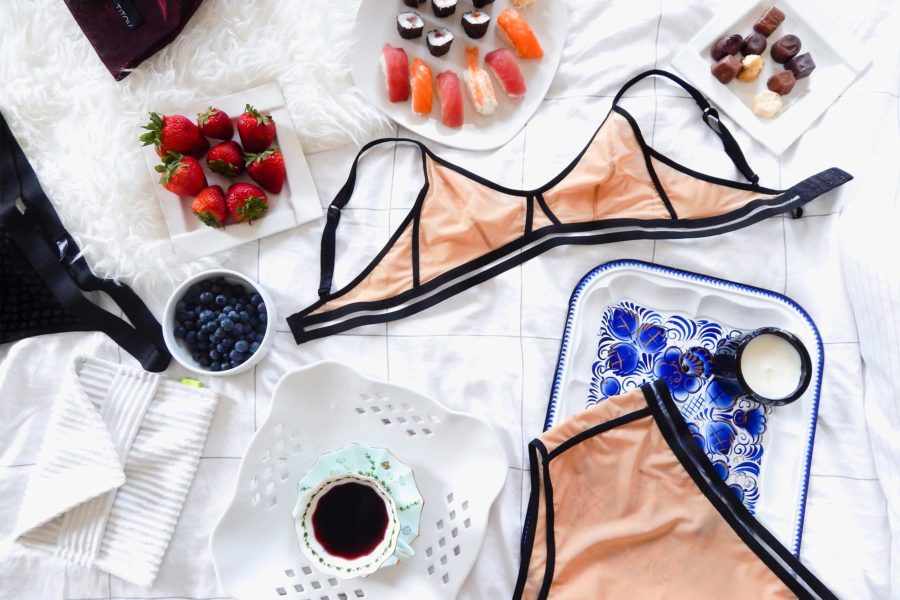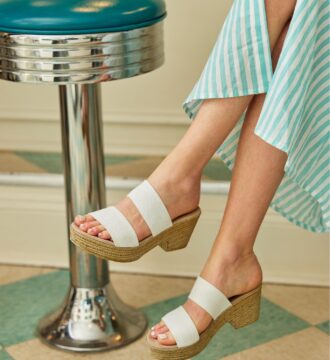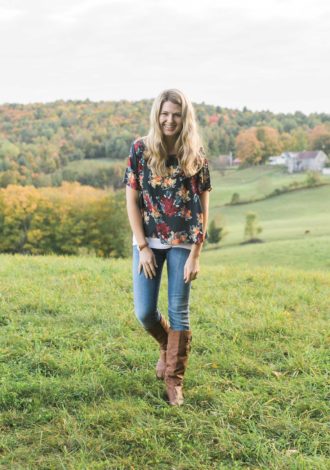Ladies, we’ve come a long way from rib-cracking corsets and bulky hoop skirts, haven’t we?
And, still. Most women today, no matter their bust size, are familiar with the sheer relief of taking off a bra at the end of the day. Releasing your girls from the discomfort of caged undergarments is a liberating feeling.
But, this begs the question why, in the 21st century, when we can send emails across the world in milliseconds and, thanks to modern medicine, we don’t even think about the diseases that killed our corset-wearing forbears, our clothes still aren’t comfy.
For a variety of reasons, lingerie companies have only recently taken into account the comfort and real bust sizes of women today.
If you listen in on real conversations women have about their undies, you’ll hear common complaints such as “ tight straps,” “uncomfortable underwires,” “itchy tags” and “gaping cups.”
Women Making Bras
Di Ventor, a native of South Africa who is currently based in L.A., has been making her own undergarments for the past 20 years, because at 19 years of age she found conventional lingerie didn’t fit her “boyish, skinny frame.”
“Back then, there were even more limited options,” she says.
Having trained in the art of making lingerie, she delved deeper into understanding why it is so hard for many women, not just petite ones, but women of all sizes, to find bras that truly fit.
“Bras in stores are built upon the assumption that if a woman’s weight increases, her bust also increases,” Ventor says about conventional lingerie. This means that a plus-sized woman might fit into the straps and bands of a particular bra, but the cups may be too big for her actual bust.
Recently, Ventor went on a bra-making retreat with BravoBella where she met budding fashion designer Masha Titova.
Native to Massachusetts, Titova attended MassArt for fashion design. During her short career, she has lent her design chops to companies like BCBG and Yeezy. This summer, she launched her own lingerie brand, Titov.
Like Ventor, Titova was fed up with trying to find bras she actually enjoyed wearing, and that she looked good in. “I realized I’ve been wearing the wrong size and on top of that, within two hours into the day, I’m itching to tear it off,” she tells Exhale.
“I’m trying to make lingerie that’s as comfortable and supportive as possible,” says the young designer about her TITOV label. “Especially being so close to your body, and in such a sensitive area.”
Comfort Means Wearing the Right Size
A widely referenced statistic, possibly from this 2008 study, says that 80 percent of women are actually wearing the wrong bra size. Some of the reasons for this discrepancy might include women not knowing how to measure themselves, and the wide variety of size standards between brands.
Another big reason: the bras available on the market are simply not designed to fit them.
In the 1930s, big lingerie manufacturers such as Maidenform, S.H. Camp and Co. and Warner Brothers Corset Co., started using the A-B-C-and D-cup system. Exactly how they came up with these measurements is murky.
Makers in the industry calculate bra size by measuring around the rib cage directly under the bust. This gives you the band size. You can calculate cup size by measuring the circumference around the body up to the fullest part of the bust.
This way of measuring doesn’t take into account breast shape. Breast shape can vary widely from person to person, and it affects how well a bra cup fits.
What’s even more surprising: Since the 1970s, most bras on the market have been built around one single lingerie model named Dorothy Galligan. That’s right. One. Woman. Galligan’s bust measured in at 34B, and so, she was deemed to have the “ideal” breast size by bra makers.
Bra prototypes were fitted on models like Galligan and then sized up or down from there. Obviously, this method of sizing doesn’t always work for women of diverse sizes and shapes. Especially women who fall in between conventional cup sizes.
What Are We Doing About It?
Newer lingerie brands like ThirdLove, True & Co., Savage X Fenty, and now, TITOV, are redefining what it takes to engineer a bra that is based on a woman’s real shape and size.
ThirdLove, for example, has developed proprietary, custom, memory foam cups in whole and half sizes for more inclusive sizing. Savage X Fenty has bra sizes available from 32A to 44DD, and underwear and loungewear in sizes XS to 3XL.
For Titova, not only is realistic sizing important, but so is comfort and wearability.
“I had rounds and rounds of wear testing. I found the perfect thread and the perfect elastics from Europe and Japan,” says Titova. “I made sure the metal pieces don’t tarnish, especially being so close to your skin.”
She ensures her designs fit real people, “not just models.” Titova does fittings on a wide variety of bodies to ensure a wide range of options. There’s no “making a small size and trying to create a large one based off of that.”
Handcrafted in Boston, TITOV bras come in 33 specific sizes that fit into signature size categories ranging from 0 to 8. Panties come in high-rise and thong styles in sizes XS to XL.
Titova hopes to continue adding more sizes, from 30AA to 38I. These sizes are based on fittings with real customers’ bodies, including those of her friends and peers.
Elizabeth Willis, Titova’s friend from college, says she used to suffer through wearing uncomfortable, and often expensive bras. She would go from brand to brand, in the hopes of finding the right fit.
“The biggest thing for me is having the fabric sit on my skin and not gape in the middle. This is difficult because size is done differently at each brand,” she says.
“I can adjust as people give me feedback,” says Titova. “I’ve already done a few alterations.”
Up next, Titova will tackle wired bras, a challenging garment to truly make comfortable. But, the designer is confident in her chosen materials.
“I found the most amazing wire that molds to your body, as opposed to being fitted into this wire contraption,” she says.
Moving Forward
In the end, geometry, anatomy and physics go into creating the perfect bra for our incredibly diverse bodies.
“I was taught to design my bra patterns starting with the breast root, where the breast joins onto the body. This is different for everyone,” says Ventor. “People think the support comes from the straps, but it should come from the middle band.”
Building a bra might not be easy or cheap, even. The underwear market, a segment worth $12 billion in the U.S., is flourishing with lingerie companies that understand that bra-wearing consumers no longer accept old size standards.
So, like Titova and Ventor, women have set out to fix the problem themselves. Because nobody else has.



 5 min read
5 min read


